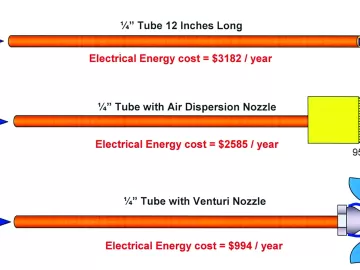The Gentex Journey to Reliable Energy Conservation - 3 Levels of Compressed Air Systems
The information contained in this article, will help the operator to assess his/her systems, and identify where these systems fall within a three-level category. There are many ways, and opportunities to make a compressed air system produce reliable and good quality air. The three levels discussed here could also be characterized as a “continuous improvement plan” which can be achieved over the course of time, and with the occasional investment of money.












